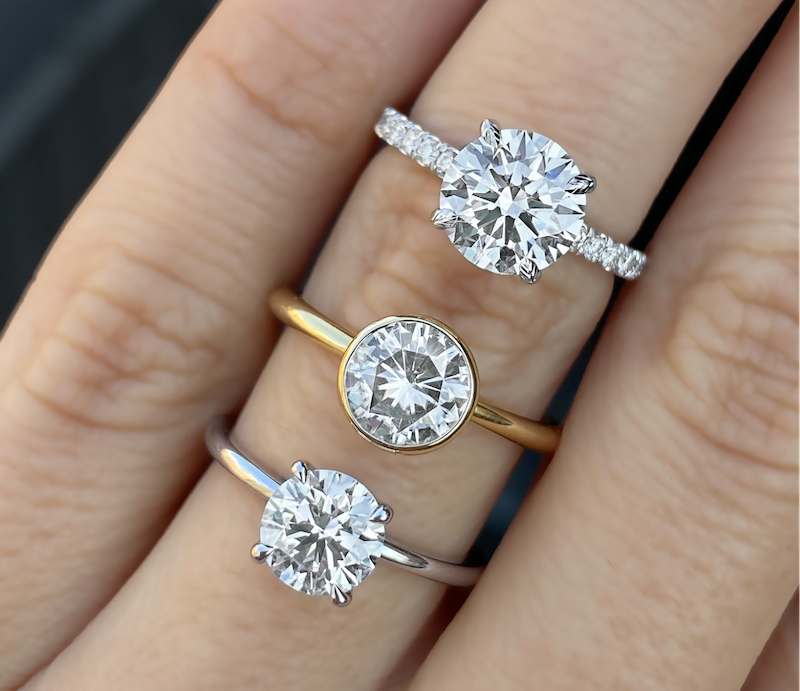Yellow Gold vs. White Gold: Which One Is Right for You?

1. Is White Gold Real Gold?
- Yes — white gold is genuine real gold.
- It’s made by mixing pure yellow gold with white metals like palladium, silver, or nickel.
- Usually finished with rhodium to give a bright, white, mirror-like shine.
2. How Is White Gold Made?
- Starts with pure yellow gold.
- Mixed with white metals to reduce the yellow tone.
- Finished with rhodium plating for strength and brightness.
3. Composition: Yellow Gold vs. White Gold
Yellow Gold Jewelry
- Typically 75% pure gold in 18K jewelry.
- Strengthened with silver and copper alloys.
- Classic, warm tone with timeless appeal.
White Gold Jewelry
- Mixed with palladium, silver, or nickel for a silvery tone.
- Rhodium plated for extra shine.
- Cooler, modern look that complements diamonds.
4. Appearance
Yellow Gold
- Warm, rich golden glow.
- Best for warmer skin tones.
- Loved in traditional and vintage designs.
White Gold
- Sleek and modern.
- Pairs beautifully with diamonds and cool gemstones.
- Perfect for contemporary styles.
5. Durability
Yellow Gold
- Durable and less prone to scratches.
- Copper alloy increases strength.
- Great for everyday wear.
White Gold
- Strong due to metal alloys.
- Rhodium plating may wear off over time.
- Needs re-coating every few years.
6. Maintenance
Yellow Gold
- Low maintenance.
- No replating needed.
- Can be polished easily.
White Gold
- Requires rhodium re-plating every 1–2 years.
- Needs more frequent cleaning.
- Shine may reduce as plating fades.
7. Hypoallergenic Concerns
Yellow Gold
- 18K gold is generally hypoallergenic.
- Lower karat gold may contain nickel.
White Gold
- Traditional white gold may contain nickel (can cause irritation).
- Palladium-based white gold is hypoallergenic.
- Choose nickel-free if you have sensitive skin.
8. How to Choose Between Them
- Style: Yellow = classic. White = modern.
- Skin Tone: Yellow complements warm tones; white suits cool tones.
- Existing Jewelry: Match with what you already wear.
- Lifestyle: Yellow gold is ideal for daily use; white gold is elegant for occasions.
- Budget: Price is similar — choose based on look and preference.
9. Gemstone Compatibility
- White gold enhances diamonds and cool-tone stones.
- Yellow gold looks stunning with red, orange, and warm gems.
10. Ethical Sourcing
- Choose jewelers using ethically sourced materials.
- At Minifora, we use conflict-free diamonds and responsibly sourced gold.
Final Thoughts
Both yellow and white gold offer beauty, durability, and elegance — the choice depends on your style and comfort.
- Want a warm, classic look? Choose yellow gold.
- Prefer a clean, modern shine? Go with white gold.
- Have sensitive skin? Consider higher-karat yellow gold or nickel-free white gold.
Explore handcrafted jewelry at Minifora.com.









